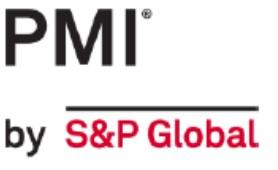The Purchasing Managers’ Index (PMI) data for manufacturing for October generally shows a decline from the September readings with the global PMI compiled by J P Morgan using the data from S&P Global down again to a 28-month low of 49.4 – if we exclude the pandemic period, it is the lowest since 2012. Output fell again, albeit mainly driven by the intermediate goods, with a small increase in the USA; new orders contracted for the 4th month in a row.
For the UK, the manufacturing PMI reading fell further into contraction territory at 46.2 as new orders fell at their fastest pace since May 2020 (the height of the initial Covid outbreak) and output shrunk for the 4th month in a row. There was a little relief in that it was not quite as bad as the flash indicator that we reported on last week. The fall in orders was blamed on a weak domestic market, high stock levels at clients, subdued client confidence and inflationary pressures. Export orders fell for the 9th month in a row with softer Chinese demand, the war in Ukraine and ongoing Brexit issues all stifling business.
We see a similar situation in the Euro-zone where the overall PMI fell to a 29-month low of 46.4 as the rate of contraction in output accelerated and new orders fell at one of the sharpest ever rates in the 25 year history of the survey. All 8 of the Euro-zone countries that have a PMI survey saw a lower reading than in September and, like last month, only Ireland has a reading in positive territory (51.4). The weakest PMI readings were in Germany (45.1) and Spain (44.7 – at 4.3 points lower than September, this is the largest month-on-month fall in our analysis), with the former of these lower even than the already weak flash indicator. The overall Euro-zone PMI is now at the levels we saw during the Euro-crisis in 2012 with only the global financial crisis and the initial pandemic periods having lower readings.
Elsewhere in the EU we find the main anomaly in this survey with Hungary recording the largest (and outside Asia, the only) increase compared to September which took their reading to 56.4 – this is also the highest among the countries that we monitor. In contrast, Czechia (41.7), Poland (42.0) and Sweden (46.8) all slipped further into negative territory – the first two of these are among the three lowest readings, beaten only by Taiwan (41.5).
Outside of the EU there was a decline compared to September for Turkey (46.4) as well as for Russia (50.7) and Switzerland (54.9), although the latter are among the handful of countries in positive territory for October.
As hinted earlier, it is in Asia that we find the only other countries where the PMI reading was higher than in September with improvements being recorded in order of magnitude in China (49.2), South Korea (48.2) and India (55.3), although with the exception of the last of these, they remain in negative territory. We have already mentioned that Taiwan has the lowest overall manufacturing PMI reading this month; the other two parts of Asia – Japan (50.7) and the ASEAN group of countries (51.6) – remain positive although less so than in September.
Finally, in the Americas, although there was a significant fall in the PMI for the USA (50.4) it was not quite as bad as the flash estimate and the final reading came out slightly above the crucial 50 level. Despite a small fall for Brazil (50.8) and an unchanged reading for Mexico (50.3), both countries also remain in positive territory but Canada (48.8) slipped further below 50 in October.
The individual S&P Global PMI reports are available to download on their web-site at https://www.pmi.spglobal.com/Public/Release/PressReleases but we also have a summary charts report which is available to download below. You should note that the PMI readings for Hungary, Sweden and Switzerland are not compiled by S&P Global but can be found with an appropriate internet search (it also means that they are not part of the global PMI calculation).

